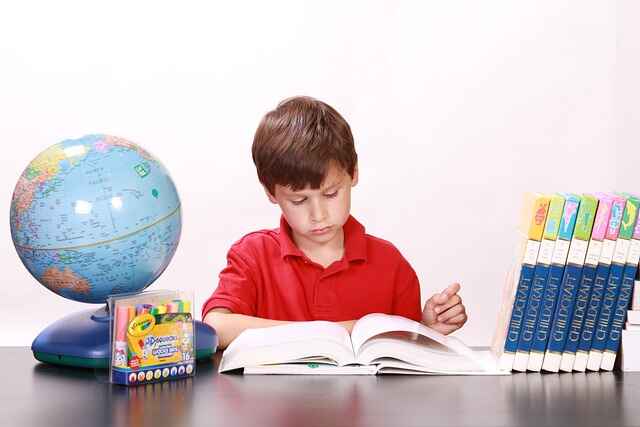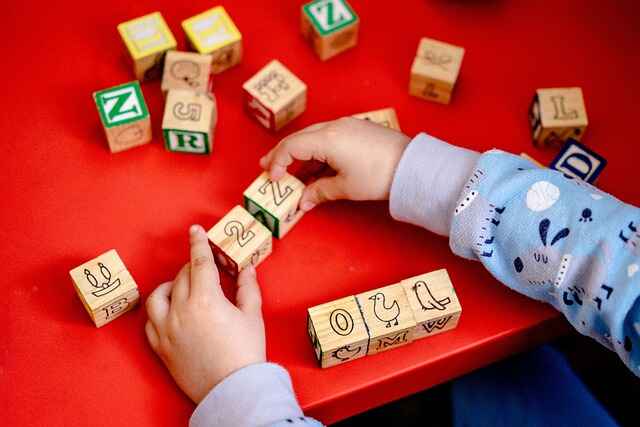Is your child’s learning path filled with twists and turns? Are they easily distracted and have trouble staying focused on a task? Do math concepts seem like a foreign language to them? If as a parent, your answer is “yes”, here are 7 common learning disabilities in children: (Source)
Also, Read Know about Autism: Complete Guide to Autism Care and Treatment
1. Dyslexia – Living in the language puzzle:
Dyslexia is a specific learning disability that affects a child’s ability to read, write and spell. It is characterized by difficulty decoding and understanding the written word, which can lead to problems with reading comprehension. Children with dyslexia may have difficulty recognizing letters, blending sounds to make words, and remembering words. These difficulties can hinder their academic progress and affect their overall self-esteem too.
What you can do as a parent?
You can support your child with dyslexia by focusing on phonological awareness. Engage them in rhyming games and sound recognition activities to improve their ability to segment words by sound. This helps them build a strong reading foundation and allows them to become better readers, conquer the language puzzle, and succeed in academia.
2. Attention Deficit Hyperactivity Disorder or ADHD:
Children with ADHD are little hearts full of childhood innocence. It is a neurodevelopmental disorder that affects a child’s ability to pay attention, control impulses, and regulate their activity level. Children with ADHD may find it difficult to focus on tasks, follow instructions, and complete tasks. They may have trouble staying organized, remembering deadlines, and managing time effectively. These difficulties can lead to academic deficits, social problems, and frustration for both the child and their parents.
What you can do as a parent?
Establish mindfulness practices to increase your child’s focus and attention. Techniques such as deep breathing and guided visualization can help ground their energy and improve concentration. Positively embracing their hyperactivity by channeling their energy into sports or creative pursuits can help them thrive and develop discipline and improve their overall performance.
3. Dyscalculia – Mathematics is a monster:
This disability specifically affects a child’s ability to understand and work with mathematical concepts. Children with dyscalculia may have problems with number sense, have trouble understanding math operations, and find it challenging to remember basic math facts. These difficulties can hinder their progress in math lessons and cause them to feel anxious and frustrated when working with numbers.
What you can do as a parent?
Making math more accessible and engaging for your child by using specific learning methods like using tangible objects, manipulatives, etc can help them better understand math concepts. Encourage problem-solving and critical thinking exercises to gain confidence in solving mathematical challenges.

4. Dysgraphia – Cultivate writing skills and creativity:
Dysgraphia is a learning disability that affects a child’s handwriting and fine motor skills, making writing a challenging and frustrating task. Children with dysgraphia may have illegible handwriting, have problems forming letters and spaces, and may have trouble expressing their thoughts coherently in written form.
What you can do as a parent?
Strengthen your child’s hand muscles and improve their handwriting by engaging in fine motor activities such as coloring, tracing, and finger exercises. In addition, use assistive technologies such as VOT or voice-over text software to allow them to express their thoughts more effectively without the difficulty of handwriting.
Try to focus on the content of their writing rather than the mechanics, encourage creative expression, and boost their confidence as writers, which can foster a love of writing and creative thinking.
5. Dyspraxia – The coordination puzzle:
This condition is also known as developmental coordination disorder or DCD. It hinders a child’s coordination and motor skill development. Children with dyspraxia may struggle with daily activities such as tying shoelaces, using utensils, or participating in sports due to problems with motor planning and execution.
What you can do as a parent?
You can encourage outdoor play such as riding a bike or playing catch to strengthen gross motor skills and increase physical confidence. Work with occupational therapists to provide targeted interventions that address specific types of dyspraxia and unlock the coordination puzzle, allowing your child to gain more confidence in their physical abilities and daily activities.

6. Auditory Processing Disorder – Decoding the sounds:
APD is a learning disability that affects a child’s ability to process and understand auditory information. Children with APD may have difficulty distinguishing between similar sounds, following complex verbal instructions, and understanding speech in noisy environments. This can lead to academic problems, communication difficulties, and frustration.
What you can do as a parent?
Help improve their auditory discrimination skills and improve speech understanding by engaging them in fun listening games. Create a supportive learning environment with reduced background noise and clear verbal instructions to facilitate their learning. Consider music therapy, which has shown positive effects in improving auditory processing.
7. Visual Processing Disorder – Discovering the visual world:
Similar to APD, VPD affects a child’s ability to process and recognize visual information. Children with VPD may have difficulty with visual tracking like following lines of text while reading, visual discrimination, and visual memory that is recalling visual information. These challenges can significantly affect their academic performance, especially in tasks that involve reading, writing, and understanding visual content.
What you can do as a parent?
Improve their ability to follow lines of text and improve reading fluency with visual tracking exercises. Improve their visual processing and recognition skills by engaging in activities that involve matching, sorting, and categorizing. Encourage them to create mental images as they read to strengthen comprehension and retention skills, which will help them better navigate and understand the visual world that we live in!
By closely monitoring your child’s academic performance and behavioral patterns, we can identify potential learning disabilities early on. When we notice persistent challenges, seeking professional evaluations and assessments is essential for support. With love, patience, and an appropriate approach, we can unlock their full potential and help them thrive academically and personally!
Also, Read Know about PTSD in Kids and Teens: Complete Coping Mechanism





